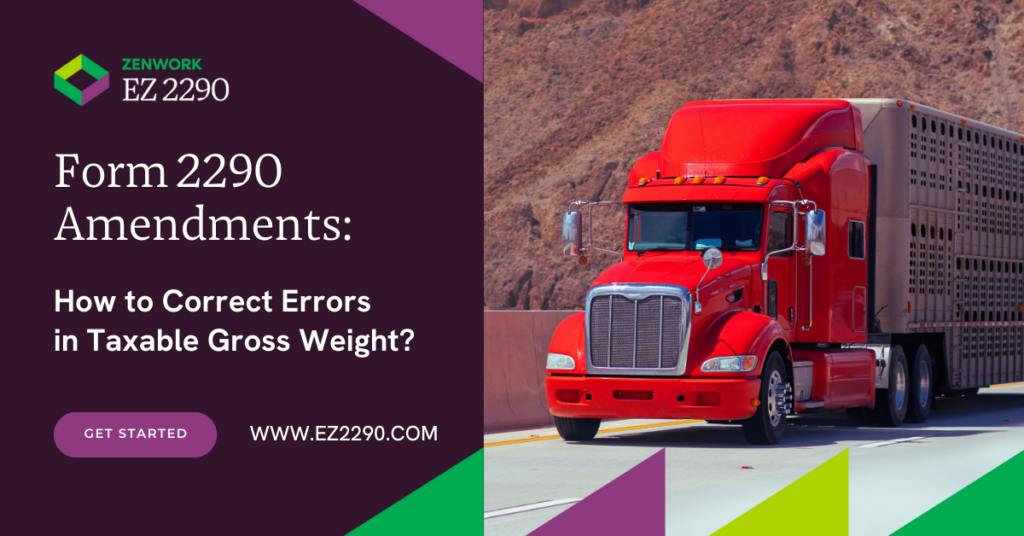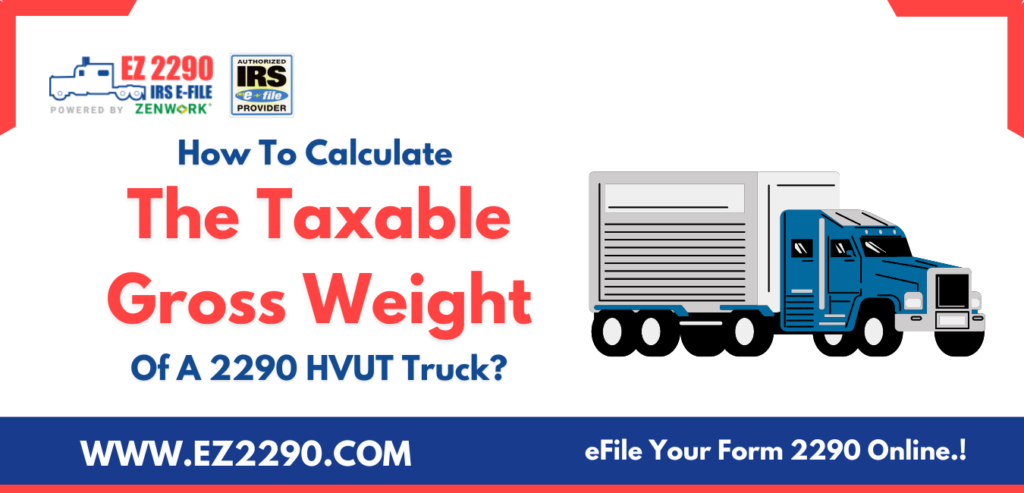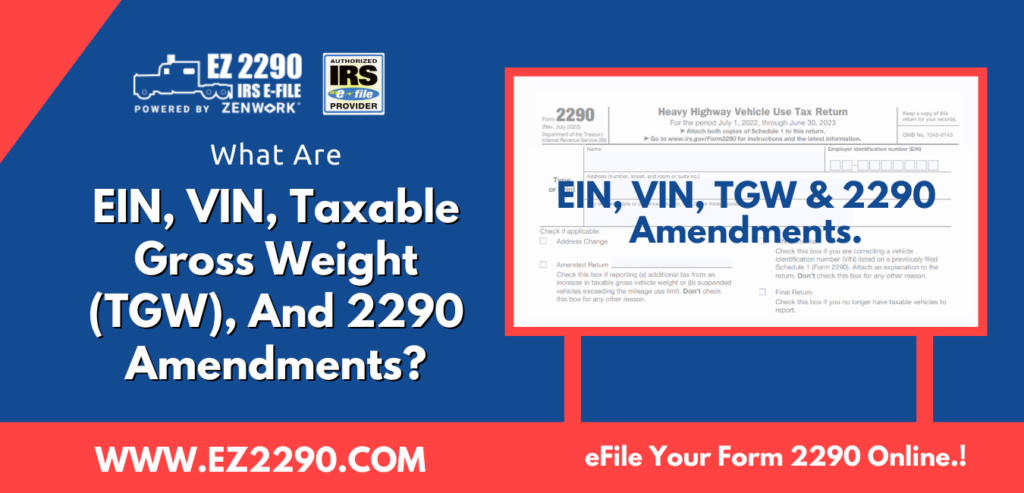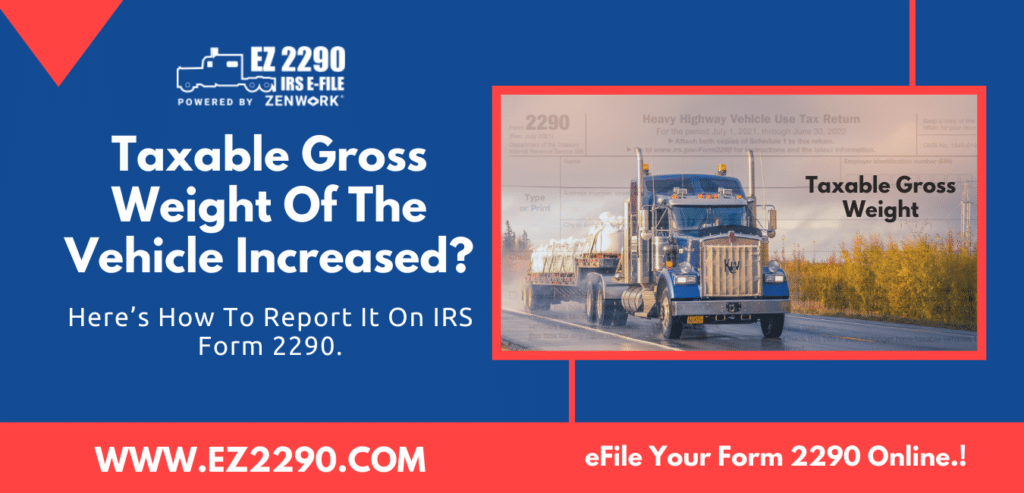
Form 2290 is a crucial form for every heavy vehicle owner to report heavy vehicle use tax (HVUT). However, filing the heavy vehicle use tax (HVUT) or Form 2290 can be a tedious task for many of us. If you just realized that you’ve made an error in your form, fret not! The IRS offers the option to make amendments to your already filed Form 2290. This ensures that truck owners and fleet operators get a chance to make corrections to any misreported information.
WHAT IS FORM 2290 AMENDMENT?
Form 2290 Amendment is an IRS return that must be filed when there is a change in the reportable information of the heavy highway vehicle. It must be filed separately in correspondence with the previously filed 2290 returns to “amend” the reportable vehicle information.
A Form 2290 Amendment must be filed if:
- There is an increase in the taxable gross weight of the vehicle
- If the suspended heavy vehicle exceeds the mileage use limit
These are the only two scenarios for which a Form 2290 Amendment must be filed.
If you want to amend or correct other reportable information, such as a VIN, then a 2290 VIN Correction form must be filed separately.
1. Increase in taxable gross weight:
If the taxable gross weight of your vehicle increases from 55,000 to a higher weight limit, then you must file Form 2290 Amendments to report this to the IRS.
Heavier vehicles are taxed at a higher rate. So, for instance, if the gross weight of your vehicle increased from 55,000 to 72,000 pounds, then the IRS would start taxing you per the standardized rates as follows.
| Gross Taxable Weight | HVUT Rates |
| Below 55,000 lbs | No tax |
| 55,000-75,000 lbs | $100 plus $22 per 1,000 pounds over 55,000 lbs |
| Over 75,000 lbs | $550 |
Note: If the taxable gross weight of the vehicle decreases below the 55,000 pounds threshold or if your vehicle simply weighs less than 55,000 pounds, then your vehicle doesn’t qualify for the 2290 HVUT.
2. Exceeded Mileage:
When a suspended vehicle exceeds the mileage use limit, you’d be required to file a Form 2290 Amendment. This is to communicate to the IRS about the increase in the mileage utility above the prescribed limits.
A non-agricultural, commercial truck that meets the HVUT weight limit can utilize up to 5,000 miles without being taxed. Similarly, an agricultural vehicle can utilize up to 7500 miles without being taxed. When a vehicle is not taxed, it’s called a “suspended” vehicle because it is “suspended” from taxes.
Even though you don’t have to pay taxes on suspended vehicles, you’ll still need to file a 2290 tax return. However, when the mileage limit exceeds, i.e., the commercial vehicle exceeds the 5000-mile limit (7500 miles for agricultural vehicle), the 2290 HVUT tax will be applicable to the vehicles, automatically revoking the “suspension” status of the vehicle.
In both cases, you will need to file a Form 2290 Amendment to the IRS.
STEPS TO FILING 2290 AMENDMENT ONLINE
Now you can e-file your Form 2290 Amendment with EZ2290 in a jiffy. Just follow these four simple steps and leave the rest to us.
Login: Create your EZ2290 account, if you don’t already have one. If you’re a member, log in to your EZ2290 account.
Fill in the Form: Select ‘2290 Amendment’ eFile service from your user dashboard. Even if you did not e-file with us previously, you can still transmit your 2290 Amendments to the IRS through EZ2290.
Validate the information: When you’re eFiling the Form 2290 Amendment, it means that you are correcting a previously misreported information. So, be sure to validate your details thoroughly before you submit.
Submit the Amendments: Submit your Form 2290 amendment with EZ2290’s secure e-filing platform. We directly transmit your submissions to the IRS, leaving no room for compromised security or data interceptions.
When you eFile 2290 Amendments with EZ2290, the IRS will send an electronic version of the Schedule-1 for the amended return. If you want to amend a previous filing, you can go to your dashboard and select the period for which you want to file the amendment.
Need Help? Contact Us Today!
You can get assistance from our tax support team here:
Our Customer Service Hours are
Monday to Friday
8:00 am to 6:00 pm CST
You can get assistance from our tax support team here:
Email us at: [email protected]












